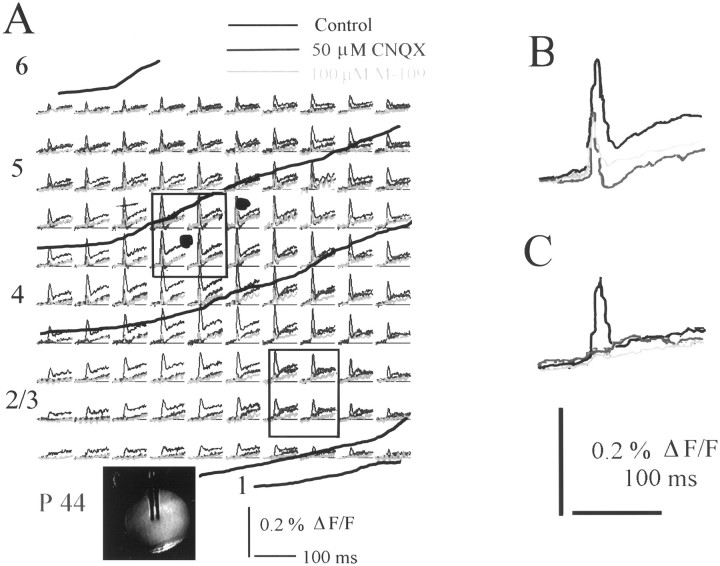Fig. 4.
Effects of the 5-HT3 receptor agonist M-109 after blockade of the fast, non-NMDA receptor-mediated excitatory response component. A, Optically recorded traces from a P46 ferret under control conditions (white), in the presence of CNQX (blue), and in the presence of CNQX and M-109 (pink). Yellow linesindicate laminar boundaries as reconstructed from cresyl violet-stained sections. The inset shows a video image of the living slice with the stimulation electrode. B, Averaged signal recorded by four photodiodes close to the stimulation site show a distinct hyperpolarizing component (blue trace) in the presence of CNQX. 5-HT3 receptor activation reduces both excitatory and inhibitory components of the optical signal (pink trace). C, Average of four responses recorded by photodiodes more distal from the stimulation site in the supragranular layers. The late excitatory component seems enhanced in the presence of CNQX. M-109 again reduces all components of the optical signal.

